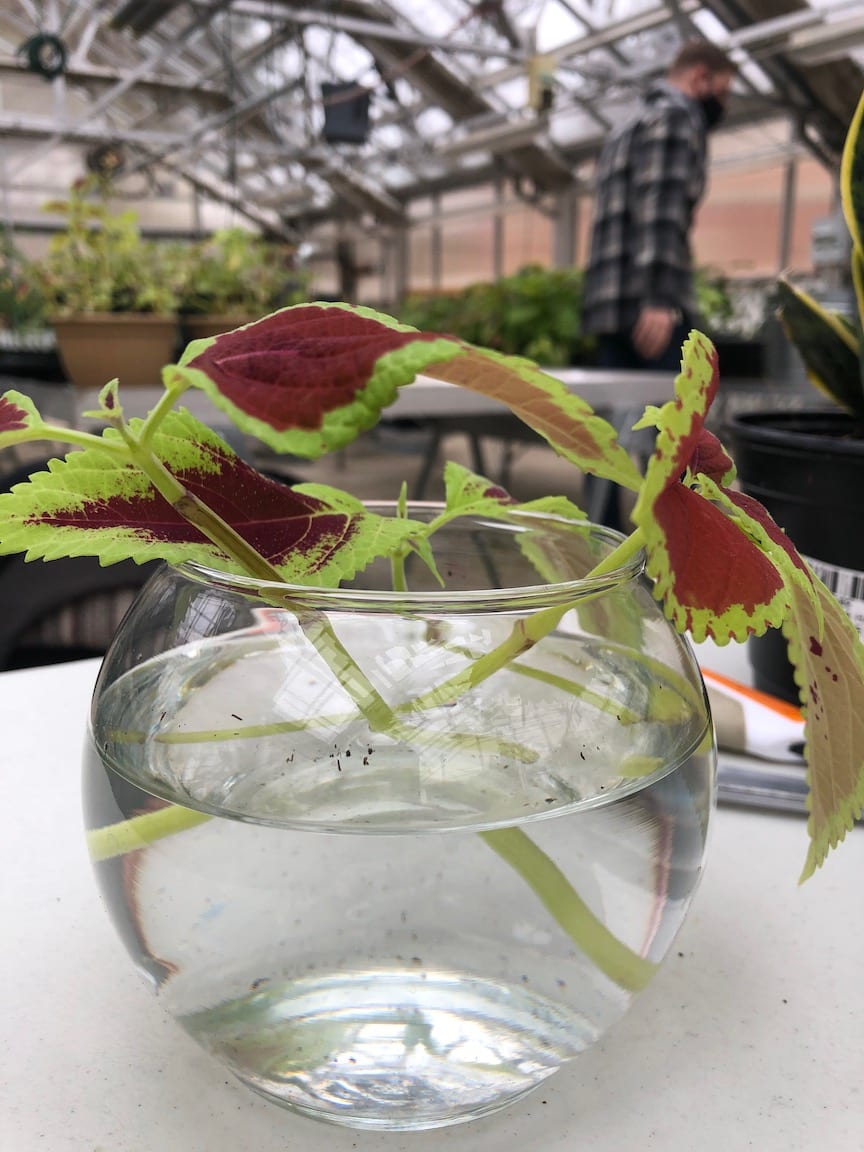
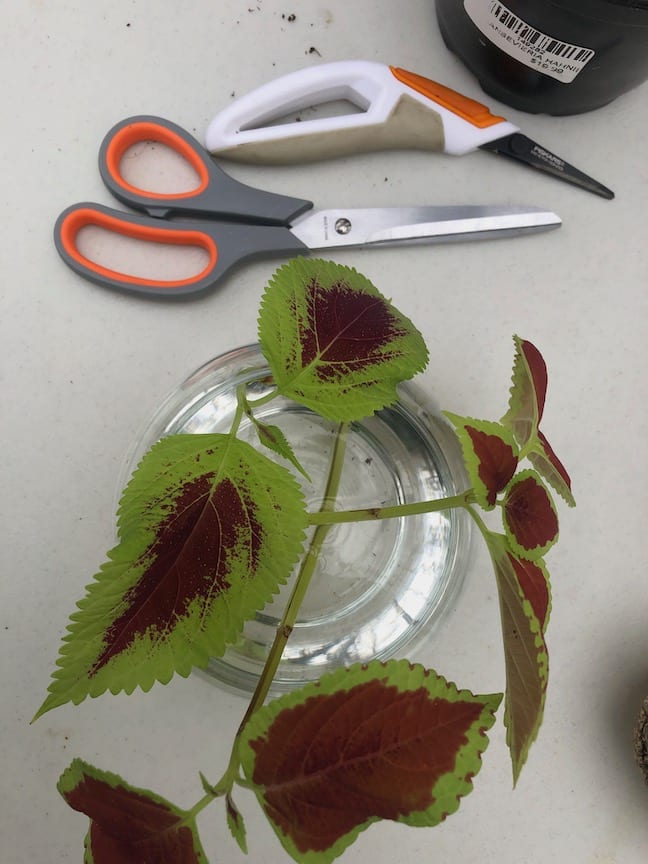
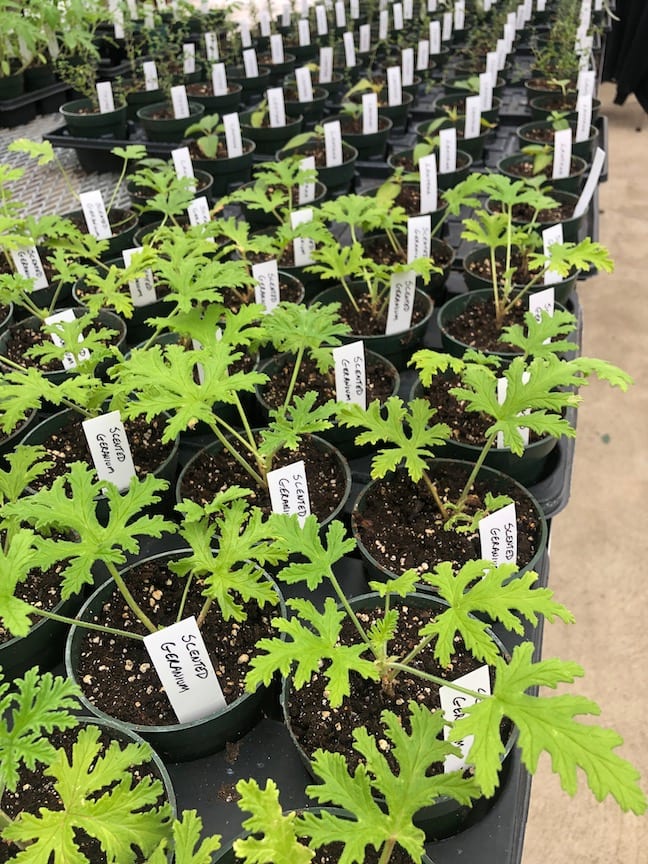
Gardening Green with Doug
Peace, Wellness, Plants, and a Sense of Community at Angora Gardens
By Doug Oster
February 2, 2020
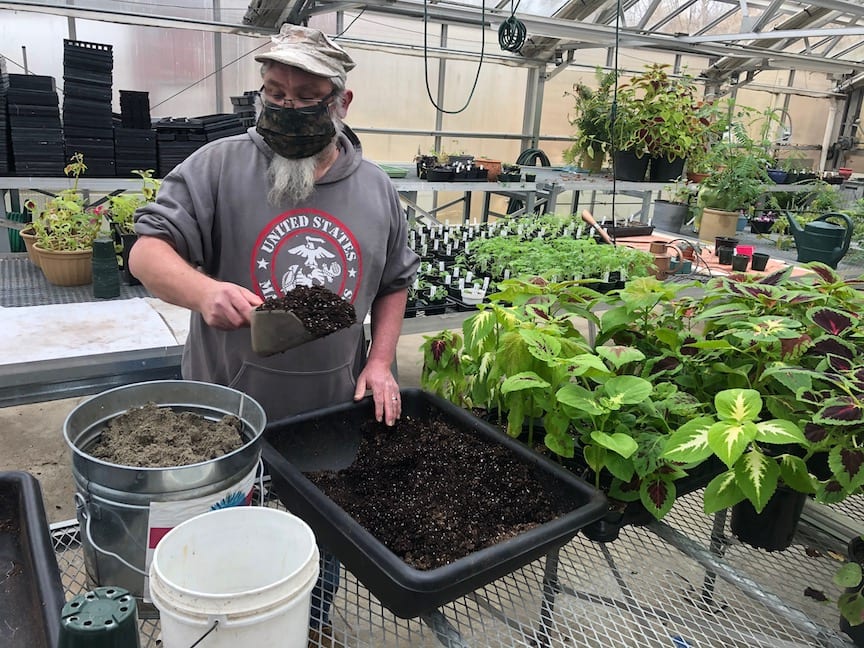
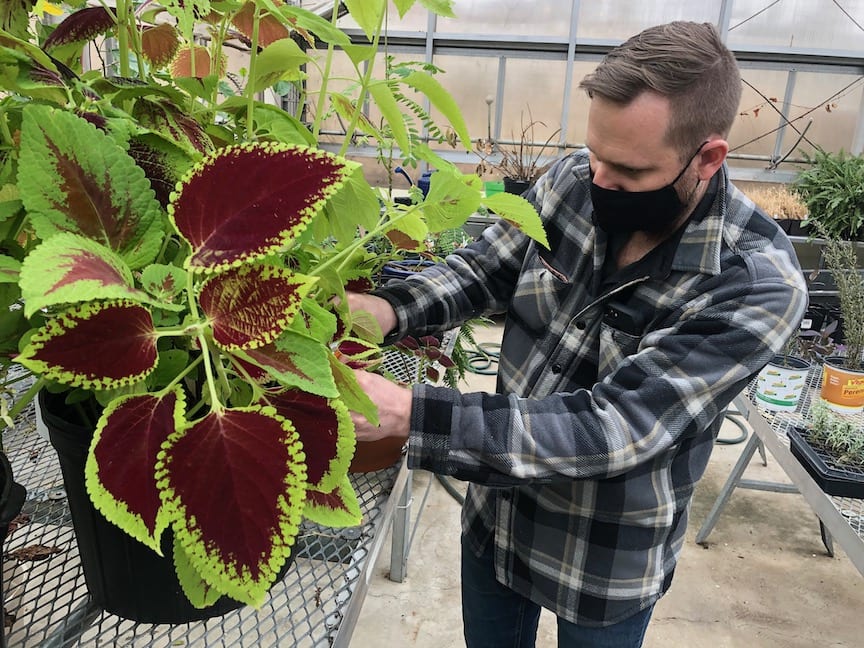
Bob Stone and Ben Petry are proudly showing off their latest experiment in the greenhouse at Angora Gardens in White Oak, Pa. The pair are standing over deep green tomato plants and some cucumber vines which are grabbing hold of vertical twine to climb.
In another corner, large colorful coleus plants act as mother plants to the two used for taking cuttings (meaning to make more plants). The long bench in the center of the greenhouse is filled with hundreds of cuttings like herbs, geraniums and other plants.
These cuttings will be used at the annual plant sale, an important fundraiser for this health and wellness center. This greenhouse isn’t just for growing; it’s about teaching and helping too. Although under the UPMC umbrella, Angora Gardens is funded solely by grants, donations and the sale.
This place is open to the community and also serves recipients of mental health and intellectual disability programs. From exercise classes, yoga, art, horticultural therapy and a host of other general wellness activities, are just a few examples of what’s provided here. Even rentals for small groups, like a wedding shower, happen here in this beautiful landscape.
Petry’s official title is maintenance technician and he’s also certified to provide horticulture therapy. He helps Bob in the greenhouse and with maintaining the three-acre property. “Everything we’re taking cuttings of, pretty much anyone can do with a little bit of knowledge,” he says from behind a cloth mask.
One of the easiest plants for cutting is from the aforementioned coleus, he says. The shade loving annual foliage plants were brought back in the greenhouse before frost and now will be trimmed and rooted.
He cuts a stem about four inches long right above a leaf node, strips off the bottom leaves and simply sticks the stem with four leaves on top into some water. It will take two or three weeks to root, and then the cuttings will be planted in small pots filled with moist planting mix. They’ll grow in a shady spot at the greenhouse until the annual plant sale, scheduled for May 1.
Vining houseplants like pothos or tradescantia can be treated in the same manner to make more plants.
Also growing on the center bench are countless herbs including rosemary, oregano, sage, lavender and thyme. There’s also lantana, scented geraniums and other plants along side of them. Each one is treated a little differently. “It depends on the stem of the plant,” Petry says. “If it has a woody stem you scrape off the bark and expose that green flesh underneath.”
The rosemary, lavender and sage are cut at about three inches, stripped of bottom leaves and are scraped gently with a razor blade. They are then dipped in Rootone and powdery rooting hormone which encourages woody plants to develop roots.
Petry will often score the stem vertically with the blade too.
Stone and Petry have their own special mix for planting these woody cuttings; two scoops of planting mix are combined with a half scoop of sand and a half scoop of grit. The former is sold at feed stores, used to amend chicken feed. This recipe assures the mixture won’t get too wet and rot the cuttings.
Since it’s humid in the greenhouse, no extra misting with water is necessary. At home, the cuttings rooting in soil should be covered in clear plastic until they root. It will keep the humidity up and help the plants form roots. Indirect light is perfect until they are ready to be uncovered.
In their operation, they use the smallest cell packs so the plant becomes root bound quicker, then can be potted up to a bigger container.
Nearly 80 percent of the cuttings eventually root and will be for sale this spring to help fund the operation. “After a month has passed, sort of squeeze the cell pack, tug on the stem,” Petry says. “If it gives you a good amount of resistance there are roots down there.”
He starts to work on a snake plant, or mother-in-law’s tongue (it’s sharp). Snake plants are a common and tough houseplant with tall flat leaves instead of a round stem like most of the other cutting plants here. This particular cultivar is Sansevieria hahnii, introduced to the trade by Sylvan Hahn, a local greenhouse grower who passed away in 1969.
The leaf is cut to about three to four inches, but not straight across. A trick Petry learned is to cut the leaf in a V or arrow shape. The shape helps him to remember which side is up. The bottom of the cutting is the only part that will root, the shape also increases the surface area the roots sprout from. It takes three months to form roots and can be treated as a houseplant through the process.
It seems everyone who works at Angora Gardens finds themselves drawn to the greenhouse. There are four employees total here, Dawn Mallas works as the events coordinator and is sitting on the other side of the greenhouse. “Everybody is hands on here,” she says happily.
“Whether it’s in the greenhouse or for an event.” Without much horticulture knowledge she decided to take a cutting from a hibiscus shrub and root it in water. Five months later she finally saw roots popping out of the bottom of her cutting. She encourages gardeners to stretch and see if they can make a few more plants. “It doesn’t hurt to try anything,” she says. “You could really take any plant and give it shot; you don’t have to be a master gardener.”
When asked why the greenhouse seems to attract the staff, she says with a laugh, “It’s like a ray of sunshine in a pile of snow.”
There’s a certain thrill, Petry adds, about propagating all these plants. “You can take a living thing and make more living things,” he says.
You have plants all year round.”
Angora Gardens saw remarkable growth in 2019, but things have slowed dramatically since COVID. Petry and the others miss seeing clients in the greenhouse where they are taught to achieve their specific goals through gardening.
“It’s a really neat way to work with people,” Petry says proudly. “Plants are sort of a universal language people can understand. I call it a rare privilege to work in a place like this.”
It was three years ago when Stone couldn’t find seeds for rosemary that he decided to experiment with cuttings. “I’ve always worked in gardens,” he says quietly about why this job is for him. After rooting nearly 50 rosemary cuttings, he knew this could be quite a bonus for the garden. He also is thinking about the clients, who might be able to return, with restrictions as soon as March. “I think we’re giving them satisfaction and something they’ve never done before,” he says of the visitors. “Some have never planted a seed.”
As he sits in the warmth of the greenhouse surrounded by plants on every side, he reflects on spending time caring for them.
“You get to watch it grow,” he says. “Just seeing plants grow and flower and come to life, it’s a magical thing.”
Volunteer Steve Lesko is in charge of the succulent cuttings for a very simple reason, “I just like doing it,” he says. Succulents almost root themselves, but need care to keep growing. Lesko works around the campus maintaining the gardens and helping Stone and Petry two or three times a week. He echoes the sentiments of everyone in the greenhouse on this day when thinking of all the people he’s helped teach here.
“I just enjoy working with them, they are a great help,” he says of the clients. “It just makes me feel good.”
The artwork of Loretta Carr can be seen in the greenhouse, in the main house and all through the campus. She has known Stone for 25 years, as they have worked together here in the past. The talented artist is one of the longest running instructors at Angora.
“I love it up here,” she says smiling. “I’m doing something that people are going to love.” Carr pauses and add adds, “I like to aggravate Bob,” she says with a laugh. “This place makes you happy.”
For Angora Garden’s supervisor Julie Pecora, who oversaw the unprecedented growth of Angora Gardens in 2019, she considers Angora Gardens a hidden gem.
“At least once a week we get, ‘I didn’t even know about this place, or I always drove by and wondered what it was,’” she says.
The garden is staffed seven days a week and even though the job titles say one thing, this is a team that obviously works together whether it’s making cuttings or helping clients.
Pre-Covid hundreds of people a month participated in programs here.
“We’re used to this place being bustling and busy, but it’s just been so quiet,” she says. “We miss that.”
As the rest of the staff wanders off to the corners of the greenhouse, Pecora quietly adds, “We’re a very tight knit group of people. We all have our roles, our talents,” she says. “This place is very special to all of us. It’s just a really unique, wonderful place to work.”
For more information go to www.angoragardens.orgor on Facebook at www.facebook.com/AngoraGardensMYCS.
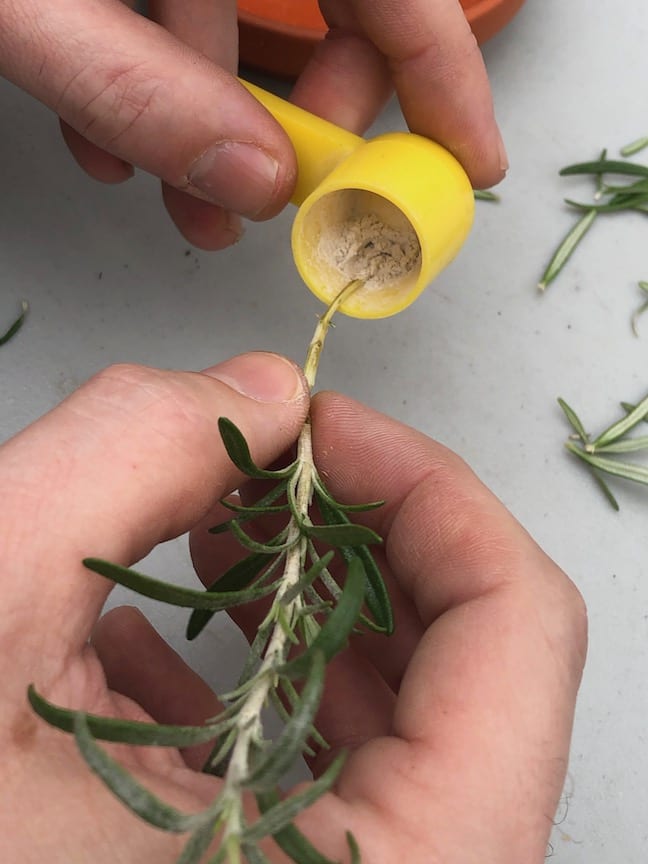
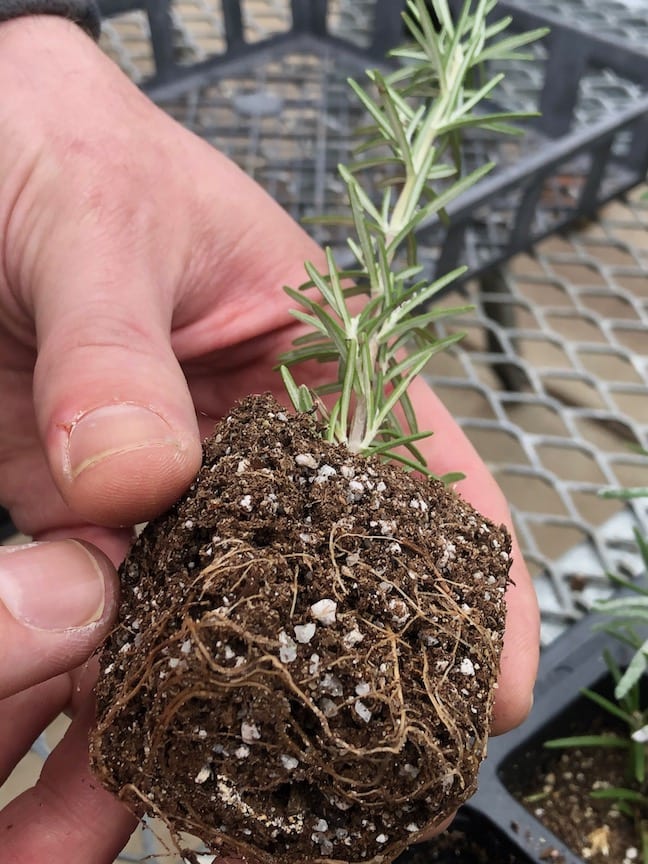

[…] Peace, Wellness, Plants, and a Sense of Community at Angora Gardens. […]